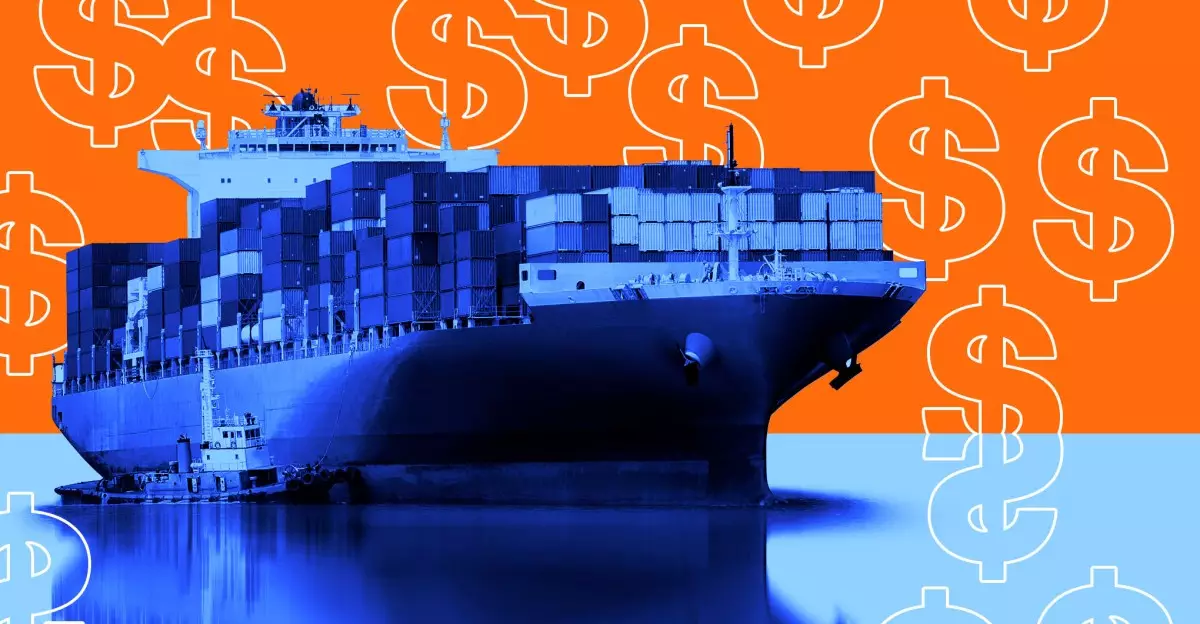In a world where convenience reigns supreme, the recent expiration of the de minimis exemption for packages from China and Hong Kong has sent shockwaves throughout the online shopping landscape. Once a cherished loophole, this exemption allowed U.S. consumers to bypass tariffs on low-value packages worth less than $800, transforming the way people shopped online. As of May 2, 2025, customers can now expect a significant financial punch to their online retail experience, especially when using platforms like Temu and Shein. This change has not just been a minor adjustment; it is a seismic shift redefining e-commerce in the United States.
The Trump administration’s decision to eliminate this little-known rule signals more than just a bureaucratic change; it reflects an evolving stance on trade and consumption. In an era where economic nationalism is palpable, such moves can be seen as attempts to prioritize domestic interests over the global marketplace. For consumers who have woven this exemption into the fabric of their shopping habits, the repercussions will be far-reaching, with more than 1.4 billion packages relying on it last year alone.
Logistical Challenges: The Postal System in Turmoil
Historically, the de minimis exemption acted as a vital artery in the flow of global goods to American consumers. However, when its expiration was temporarily halted earlier this year, chaos ensued. The United States Postal Service (USPS) grappled with the abrupt shift, initially announcing—and then retracting—suspensions on shipments from China and Hong Kong. This degree of disarray begs an important question: are the infrastructural systems truly prepared to handle the onslaught of duties and tariffs now that the exemption has officially ended?
Recent estimates suggest that processing these low-value packages could cost the U.S. government around $3.2 billion annually. Yet, with a staggering volume of over a billion packages entering through this system, the necessary framework for processing such a vast quantity seems nebulous at best. The postal infrastructure was simply not designed for this new reality, fraught with ambiguities and uncertainties.
The Big Picture: A Consumer-Centric Perspective
For the everyday shopper, this change signals not only higher shipping costs but also poses a risk of decreased selection in the online market. The online retail economy thrives on accessibility and variety—principles that de minimis exemptions nurtured. Now that the tariff structures have become more stringent, shoppers will likely face either inflated prices or limited options, as businesses struggle to adapt to the increased operational costs.
One cannot ignore the psychological impact this shift may have on consumers. Widespread uncertainty regarding costs may make potential shoppers hesitate to click “checkout,” further stifling retail growth. eCommerce giants like Amazon and fast-fashion innovators like Shein and Temu have banked on the agility of direct shipping to keep their prices competitive; increased tariffs may force them to reevaluate their business models, leading to potentially higher prices passed directly to consumers.
The Underlying Implications: A Question of Regulation
At the heart of this bureaucratic labyrinth lies a dual narrative: regulation versus consumer protection. The Trump administration has framed this tariff framework as a necessary measure for thwarting illegal imports, such as synthetic opioids. However, the effectiveness of these regulations in actually curbing such imports remains ambiguous, raising concerns about whether this drastic measure truly addresses its intended goal.
Moreover, the execution of these rules is predicated on Customs and Border Protection (CBP) having the proper mechanisms in place to enforce compliance. Yet, the lack of clarity surrounding processes for lower-value packages heightens anxiety among stakeholders involved—from shipping companies to consumers. Will every low-value package truly fall under the exhaustive scrutiny of customs, or will some evade the new rules? Such inconsistencies will only exacerbate the confusion that permeates this new policy landscape.
A Transformative Moment for E-Commerce
This new tariff regime represents not just a policy change, but a transformative moment for online retail. It is a wake-up call for consumers who may have taken the ease of low-tariff online shopping for granted. With rising costs and dwindling options, the future of online shopping may not just be a matter of preference but of influence, shifting the balance of power back to domestic sellers. Businesses seeking to navigate this new terrain will need to adapt swiftly, and customers need to be prepared for a shopping experience that may be markedly different from the affordability and accessibility they have grown accustomed to.
As companies recalibrate their pricing strategies and logistics, the overarching narrative remains clear: this change, however politically motivated, will leave an indelible mark on how U.S. consumers engage with online commerce moving forward.

